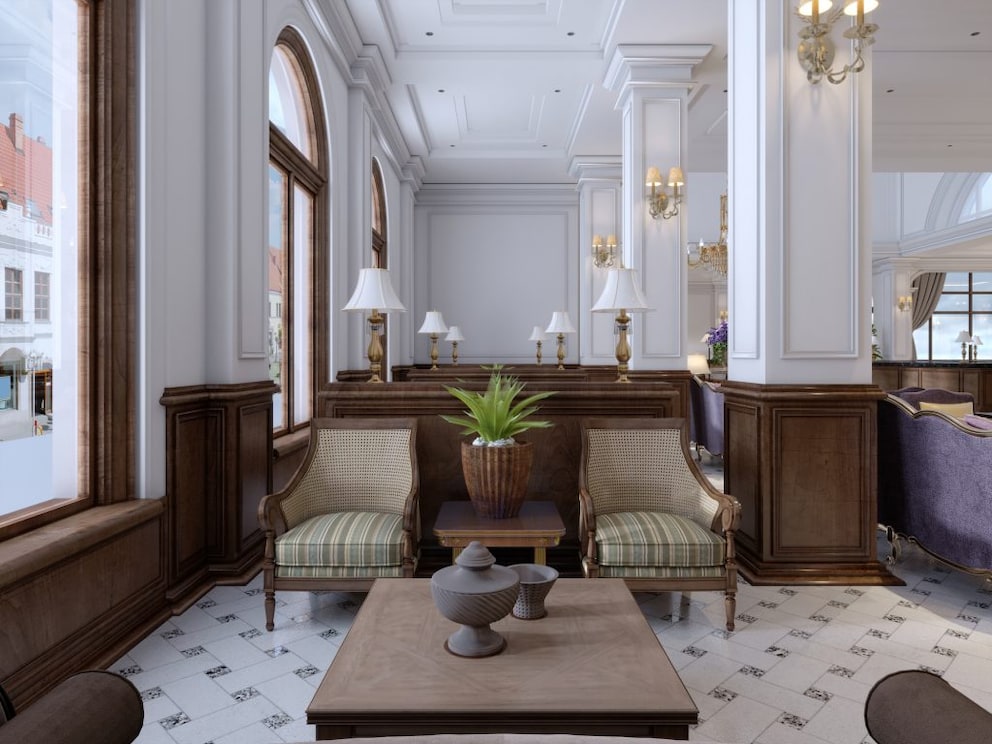April 16, 2023, 10:12 am | Read time: 3 minutes
Living Like Royalty: Embracing the Louis XVI Style Living like royalty—that’s the feeling you get when you draw inspiration from the still-renowned Louis XVI style for your home decor. This French style distinctly set itself apart from Rococo and marked the beginning of an entirely new era in design.
When browsing an antiquarian shop for old furniture, one often encounters the term Louis-Seize. This style is also a well-known concept in architecture. Remarkably, this era dates back several centuries. Yet, antique dealers still advertise with the Louis-Seize style today. So, what characterizes this art epoch?
What is understood by the Louis-Seize style?
Officially, the Louis-Seize style epoch (French for the number 16) is classified between 1760 and 1790, placing it in the pre-revolutionary Neoclassicism. The style, which primarily influenced architecture and interior design, is named after the French King Louis XVI, whose reign lasted from 1774 to 1792. In Germany, the Louis-Seize style is also known as the Zopfstil. Stylistically, it is particularly notable for its return to stricter symmetrical forms, marking the end of the extravagance, opulence, and splendor that King Louis XIV once cherished.

How can the style be classified?
Strictly speaking, the Louis-Seize style represents the period between the late Baroque (Rococo) and the beginning of Neoclassicism. Before Louis XVI came to power, Louis XV (Louis-quinze) was the reigning king. During his reign, the Louis-Seize style was already emerging. However, its true heyday is dated to the second phase, during the reign of Louis XVI, just before the outbreak of the French Revolution.
Even though the Louis-Seize style was named after the king of the time, the actual namesake is more his wife, the Dauphine of France, better known as Marie Antoinette. Her decadent and extravagant lifestyle, especially concerning royal furnishings, is famously known to have cost her dearly, quite literally.
Also interesting: How Art Nouveau continues to influence architecture today
Characteristics of the Louis-Seize style
Primarily, Louis-Seize is known as a French style in architecture and interior design. While organic Rocaille ornamentation was typical during the Rococo period, furniture now featured a distinctly linear, elegant design language. Instead of many ornate details, clear geometry defined the Louis-Seize style. In many furniture designs, a subtle reference to flora and fauna was evident. Gradually, meander patterns, medallions, and trophy decorations also began to appear.
Louis-Seize furniture was usually made from a noble hardwood like mahogany and featured elaborate marquetry. Whether a chair or a secretary, furniture pieces from that time were defined by a delicate construction that revealed significantly more “leg” than previous styles. Furniture legs were either round or square and tapered toward the floor. At the top, however, there was a capital or a block to emphasize the furniture’s support function.

How the Biedermeier Era Shaped Architecture and Furniture Design

The Barcelona Chair and Its Royal History

How the Kidney Table Became a Furniture Classic
Special seating furniture of that time

The Louis-Seize chair, with its distinctive vertical fluting along the sides, is particularly notable in history. The Voyeuse, a chair model, and the Bergère armchair type are also known seating furniture from that time. The Voyeuse’s uniqueness was that one could sit astride it, with the stomach facing the backrest. The elbows could then rest on the broader support surface.
This allowed for comfortable observation of lengthy games at the table or conversations in an opposite position. The Bergère, on the other hand, was known for its lavish padding on the seat, back, and armrests, as well as the visible, intricately decorated wooden frame. The seating furniture provided a comfortable yet upright sitting position.


